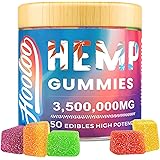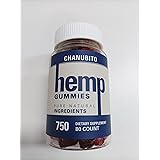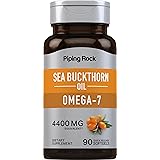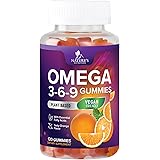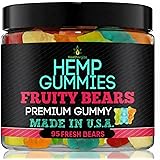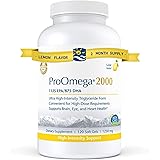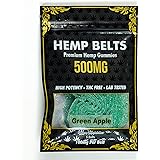Many individuals seek effective ways to manage daily stress. Finding a natural remedy for anxious feelings is a common goal. This search often leads people to consider compounds like CBD. As Dr. Tracey Marks discusses in the video above, Cannabidiol (CBD) has gained significant attention. It is touted for various health benefits. However, understanding what CBD is, what the science says, and its potential risks is essential. Making informed choices about your health is always key.
1. Understanding Cannabidiol (CBD): The Basics
The cannabis plant is quite complex. It contains over 100 unique chemical substances. These are known as cannabinoids. Two main cannabinoids are often discussed. They are Tetrahydrocannabinol (THC) and Cannabidiol (CBD). THC is well-known for its mind-altering effects. It is the compound that produces a “high.”
CBD, conversely, is different. It does not possess these psychoactive properties. This is a crucial distinction for many users. People are often seeking relief without altered mental states. Therefore, CBD has become popular. It offers a potential natural option. This is especially true for those concerned about THC’s effects.
What is CBD and How Does it Differ from THC?
The cannabis plant, also called marijuana, includes both THC and CBD. Marijuana products typically contain a mix of these. The ratios can vary widely. CBD is often extracted from hemp plants. Hemp is a variety of cannabis. It contains very low levels of THC. This ensures the product is non-intoxicating. CBD products are diverse. They include oils, tinctures, edibles, and topical creams. Each form offers different ways to consume CBD.
The core difference lies in their interaction with the brain. THC binds directly to cannabinoid receptors. These receptors are found in the brain and nervous system. This binding creates the euphoric effects. CBD works differently. It influences these receptors indirectly. It may also affect other non-cannabinoid receptors. This wider interaction could explain its varied potential effects. It is important to remember this distinction. It shapes both the legal status and perceived benefits of each compound.
2. The Legal Landscape of CBD and Cannabis
The legal status of cannabis and its components is complex. It varies greatly by location. Marijuana, which contains higher levels of THC, is illegal federally in the United States. However, many states have legalized it. These laws allow for recreational or medical use. Medical marijuana programs often adjust THC content. Patients can choose options with high or low THC. This customization helps address specific needs.
CBD’s legal status is generally clearer. It is legal federally if derived from hemp. This means it must contain less than 0.3% THC. This federal legality has allowed the CBD market to boom. Products are available widely. They can be found in health stores, online, and even at gas stations. However, federal legality does not mean a lack of oversight. The Food and Drug Administration (FDA) plays a significant role. Their regulations affect how CBD products are marketed and sold.
FDA Oversight and Warnings on CBD Products
The FDA maintains a strict stance on CBD. They have approved only one prescription CBD drug. This drug is called Epidiolex. It treats specific seizure disorders. All other CBD products are not FDA-approved drugs. This creates a regulatory gray area. Many companies market CBD for various ailments. These include pain, PTSD, depression, ADHD, and **CBD for anxiety**. This marketing is where problems arise.
The FDA views claims about treating diseases seriously. If a product claims to cure or treat a disease, it is considered a drug. Such products must undergo rigorous testing. They must prove both effectiveness and safety. This process is expensive and time-consuming. Most CBD companies have not done this. As a result, the FDA has issued warnings. In November 2019, the FDA warned 15 companies. These warnings were for illegally selling CBD products. The companies made unsubstantiated health claims. This action underscores the FDA’s concern. They prioritize consumer safety and truthful marketing.
3. CBD for Anxiety: What the Research Reveals
Many individuals turn to **CBD for anxiety**. They hope to find relief from daily worries. The popularity of CBD has skyrocketed. But its effectiveness needs careful examination. Scientific evidence is currently limited. Strong research is still developing. Most studies on CBD for anxiety are preliminary. More robust clinical trials are necessary.
A significant analysis was conducted. The Veterans Administration (VA) reviewed studies. They looked at cannabis use for pain and PTSD. These studies primarily involved cannabis. This means they contained both THC and CBD. The VA analysis found “low-strength evidence.” This suggests cannabis might help neuropathic pain. However, there was not enough evidence for other pain types. Arthritis pain, for example, lacked sufficient support. The cannabis used in these studies had specific ratios. They often had a 1:1 or 2:1 THC to CBD content. This means THC was present, often in higher amounts.
Understanding “Low-Strength Evidence”
What does “low-strength evidence” truly signify? It indicates a lack of rigorous testing. Study designs might have flaws. There might be inconsistent results across trials. One study could show a positive effect. Another might show no effect. To be considered strong evidence, results must be reproducible. This means experiments should yield similar outcomes repeatedly. Without this consistency, conclusions remain tentative. This is particularly true for conditions like **CBD for anxiety**.
Other organizations have also reviewed data. Their findings often echo the VA’s. The evidence remains inconsistent. This applies to cannabis as a whole. It is especially true for CBD used alone. Many factors contribute to this. These include varying product quality. Dosage differences also play a role. The specific type of anxiety can also influence results. Therefore, claims of guaranteed benefits should be viewed cautiously. The scientific community continues its work. More definitive answers are still being sought.
4. Important Safety Concerns and Potential Side Effects of CBD
Just because something is natural does not mean it is completely safe. This principle applies to CBD products. The FDA has raised several safety concerns. They caution consumers about potential risks. These warnings are based on available data. They also consider unknown long-term effects. It is important to be aware of these issues. Making informed decisions about your health is crucial.
Some reported side effects are noteworthy. Liver injury has been observed in some users. Changes in alertness can also occur. This might include drowsiness or fatigue. The long-term effects of regular CBD use are still unknown. We do not have extensive data yet. This is a critical gap in our knowledge. More research over extended periods is needed. This will help us understand chronic use effects. Until then, caution is advised for long-term users.
Animal Studies and Reproductive Health
Concerning animal studies have emerged. Some research involved male animals. These studies showed decreased testicular size. They also reported reduced sperm count. Lower testosterone levels were another finding. These changes were significant. They even affected male offspring. This occurred when mothers were given CBD during pregnancy. These findings raise important questions. Do these effects translate to humans? We simply do not know yet. Human physiology differs from animals. However, these results warrant serious consideration. They highlight potential risks. Especially for reproductive health. Individuals considering CBD should discuss this with a doctor. This is particularly important for those who are pregnant or trying to conceive.
5. Sourcing and Quality Control: A Major Concern
The unregulated nature of the CBD market creates challenges. There is a lack of standardization. Many products are available. However, their quality varies widely. Dr. Marks highlighted “sourcing issues” as a primary concern. It is difficult to verify product contents. Consumers often rely on company claims. This can be problematic. The FDA has acknowledged these risks. They are investigating reports. Some CBD products contain unsafe contaminants. These include pesticides and heavy metals. These substances can be harmful. Their presence undermines the product’s safety. Additionally, some products contain more THC than labeled. This could lead to unexpected psychoactive effects. It also has legal implications for users.
What to Look For in a CBD Product
Choosing a reliable CBD product requires diligence. Consumers should seek transparency. Look for companies that provide third-party lab testing results. These reports are called Certificates of Analysis (COAs). A COA should confirm several things. It should verify the CBD content. It should also show THC levels. Importantly, it should test for contaminants. These include heavy metals, pesticides, and mold. Reputable companies make these COAs readily available. They are often found on their website. Check for clear labeling. Ingredient lists should be comprehensive. Dosage recommendations must be clear. Avoid products with vague claims. Be wary of those promising miraculous cures. Investing time in research is essential. This helps ensure both safety and potential effectiveness.
6. The Future of CBD Research and Therapeutic Potential
Despite current limitations, research into cannabis continues. The scientific community is actively exploring its potential. This includes studies on both THC and CBD. While current evidence for **CBD for anxiety** and other psychiatric conditions is inconsistent, this does not mean future findings will be the same. Science evolves constantly. New discoveries are always being made. There is hope for clearer answers soon.
One example is the drug Sativex. It is approved in some countries. It treats neuropathic pain. This drug contains both THC and CBD. The ratio is typically 1:1. It is currently in clinical trials in the U.S. This raises an interesting question. Is THC necessary for the therapeutic effects of cannabis? If so, using CBD alone might not be as effective. It could expose users to side effects. Yet, it might not deliver full benefits. These are crucial questions. They require further investigation. Understanding the “entourage effect” is also important. This theory suggests cannabinoids work better together. They create a synergistic effect. The optimal ratios of THC to CBD, and other cannabinoids, need to be determined. Future research will focus on these areas. It will aim to pinpoint effective dosages. It will also identify specific conditions CBD can genuinely help. Hopefully, science will provide these answers soon.


